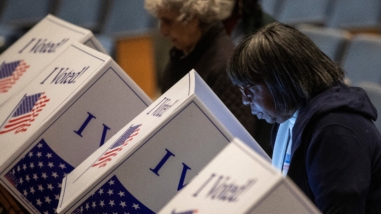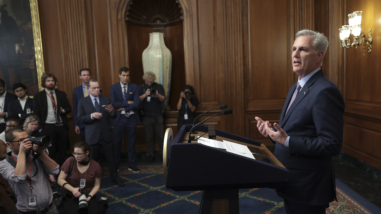One of the big issues in the 2016 election was the vast amount of money spent on political campaigns. Polls consistently suggest that more than 80% of Americans want to see our country’s campaign finance system reformed. It’s also a big issue in the nonprofit world. From 2011 to 2016, the Foundation Center identified campaign finance grants from almost 170 funders to more than 150 recipients totaling nearly $94 million.
The Hewlett Foundation’s Madison Initiative began funding organizations working on campaign finance data in 2012. Support for the collection of campaign finance data — through the Center for Responsive Politics (CRP) and the National Institute on Money in State Politics (NIMSP) — were among our first grants.
Both organizations do largely the same type of work: converting bulk data files to searchable formats, cleaning up the data, coding and aggregating it, linking to other data sets, and ultimately, analyzing the data and sharing what they find.
CRP focuses on federal data, and more recently on the “dark money” flowing to campaigns from organizations that aren’t required to disclose their donors. NIMSP, as its name suggests, works at the state level, and is also beginning to provide cross-jurisdictional donor analysis for state, federal and selected local elections.
About a year ago, the Madison Initiative team began wrestling with whether, in light of technological advances and all the talk about the big data revolution, foundation support for basic campaign finance data collection and curation was still necessary. We wanted to understand a few key things:
- How central a role were these grantees playing in the broader campaign finance ecosystem?
- How important were these grantees in relation to each other, and others in the field? Should we continue to fund both?
- Would federal level data, increasingly available from the Federal Election Commission and other organizations, remain publicly accessible if CRP and NIMSP were not playing this role? In other words, could users collect these data on their own? Would the FEC soon deliver it in a user-friendly way?
To help answer these questions, we turned to our evaluation partners at Center for Evaluation Innovation (CEI). CEI interviewed a dozen experts, hand-picked to include the top researchers, journalists, advocates, policymakers and legal scholars in the field of campaign finance. While some opportunities for improvement were noted, the interviews were virtually unanimous – and overwhelmingly positive.
One interviewee noted that “If they [CRP and NIMSP] went away, this would be pretty devastating for my [work].” Another noted that these organizations do “a much better job with this kind of ‘sense-making,’” which the FEC remains unable to provide. A third confirmed that “you aren’t just getting the raw data, you are getting an analysis by people who really know what they are doing and what is significant about the data.”
In light of these findings, and as part of our grantmaking focus on what are the most promising avenues for reform, we decided to support two large, long-term grants:
- A $1 million grant over three years to NIMSP, based on our belief that it is more likely that we’ll see reform at the local and state level in the near term, and that any thoughtful federal reforms will necessarily rely upon lessons from how local efforts play out
- A $1.4 million grant over three years to CRP – a slightly larger investment, but we believe an appropriate one, given that our focus remains primarily on the federal level, and on improving conditions in Congress
Unfortunately, a number of large funders, for various reasons, have recently pulled back funding from the campaign finance data space, leaving these two institutions at the same (or lower) levels of funding than in recent years. This comes at a time when funds are needed more than ever, as both the volume of money and the complexity of tracking it – given the rise of “dark money” — have increased notably.
Without the data these groups provide, researchers would struggle to understand the impact of the different federal, state and local policies. Journalist wouldn’t have as much to write about, and advocates and policymakers would be harder pressed to articulate the magnitude of the problem — much less the potential effects of different reforms.
After all, without these groups, how would we know that donors poured more than $1 billion into this years’ state and local races, with the average cost of a state Senate seat in Virginia (the most expensive state on the list) at about $500,000? For a House seat, the average cost was $169,000.
Or that the cost of the average U.S. Senate race rose almost 20% to $19 million, with almost half of that spending coming from outside sources. In fact, in this year’s 34 Senate races, 77% of all disclosed contributions came from donors living outside the state. And in swing states, a whopping 84.5% of contributions came from donors out of state.
This kind of information is critical if we are to achieve meaningful campaign finance reform. We’re committed to supporting this work, and hope others will recognize that success across a number of dimensions requires grounding in the basic data and insightful analysis that CRP and NISMP provide.

 Svetlana Lukienko/Shutterstock
Svetlana Lukienko/Shutterstock


